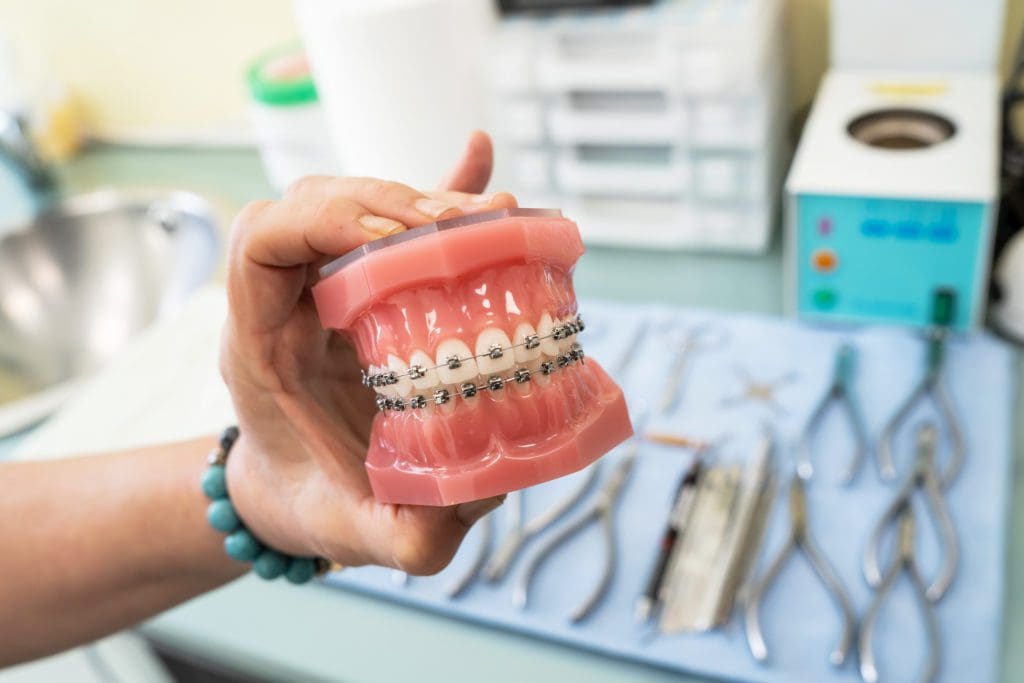Picking the Best Cumming Orthodontics for Effective Braces and Aligners Solutions
Wiki Article
Comprehensive Guide to Orthodontics Treatments for Fixing Dental Imbalances
In the world of orthodontics, the trip to attaining a flawlessly aligned smile involves a myriad of procedures customized to correct oral imbalances. From traditional braces to unseen aligners and even surgical options, the area of orthodontics supplies a variety of services to attend to varying levels of oral abnormalities. Recognizing the intricacies of each treatment, including their mechanisms, advantages, and possible drawbacks, is essential in making informed choices regarding one's orthodontic therapy. As we browse through the comprehensive guide to orthodontic treatments for dealing with dental imbalances, the intricate details of each method will certainly unravel, clarifying the course towards a unified and functional dental alignment.Orthodontic Procedures Introduction

Routine adjustments and monitoring are critical parts of orthodontic therapy to make certain progress is on track and to make any kind of required modifications along the way. By undergoing orthodontic treatments, patients can not just accomplish a straighter grin however likewise enhance their total dental health and feature.
Traditional Braces: How They Work
When taking into consideration orthodontic treatments for dental imbalances, conventional dental braces stick out as a reliable method for fixing teeth placing. Conventional braces include braces, cords, and bands that function together to apply constant stress on the teeth, slowly relocating them into the wanted placement. The braces are affixed to the teeth making use of a special adhesive, and the cables are threaded through the brackets. By changing the stress of the wires, orthodontists can regulate the instructions and pressure related to each tooth, guiding them into proper positioning gradually.
One trick facet of how traditional braces work is the process of bone makeover. As stress is related to the teeth through the dental braces, the bone bordering the teeth is reshaped to sustain the brand-new tooth settings. This improvement is vital for the lasting stability of the dealt with positioning. Clients will certainly require routine changes at the orthodontist's workplace to make sure the braces continue to use the right pressure for reliable teeth movement.
Undetectable Aligners: Cons and pros
These clear, personalized trays are essentially undetectable when used, making them an attractive choice for people looking for a more cosmetically pleasing orthodontic treatment. People can remove the aligners before eating or cleaning their teeth, reducing the risk of food obtaining stuck in the appliance and streamlining the cleansing process.
Surgical Orthodontic Options
Surgical interventions in orthodontics existing viable options for attending to complicated oral misalignments that might not be successfully fixed via standard orthodontic treatments. While undetectable aligners and typical dental braces can fix numerous orthodontic issues, particular cases require surgical treatment to achieve ideal outcomes. Surgical orthodontic alternatives are normally recommended for severe malocclusions, substantial jaw discrepancies, and cases where the underlying bone framework needs modification to achieve correct placement.One typical surgical orthodontic procedure is orthognathic surgical treatment, which entails repositioning the jaws to fix useful concerns such as difficulty chewing or talking. This surgical procedure is often carried browse around this web-site out in collaboration with an orthodontist that assists align the teeth before and after the procedure. Surgical orthodontics might also entail procedures to reveal affected teeth, get rid of excess periodontal cells, or improve the jawbone to produce a more harmonious facial profile.
Before thinking about surgical orthodontic choices, clients undertake a comprehensive evaluation to establish the necessity and possible benefits of such treatments. aligners. While surgery may seem difficult, it can considerably boost both the function and looks of the smile in situations where conventional orthodontic therapies fall short
Retainers and Post-Treatment Care

Post-treatment care involves following the orthodontist's guidelines diligently. This may include correct oral health practices, attending follow-up visits, and wearing the retainers as recommended. Failing to abide by post-treatment treatment directions can result in regression, where the teeth slowly relocate back in the direction of their initial placements. Regular retainer wear, good dental hygiene, and routine dental examinations are important for keeping the outcomes achieved via orthodontic surgical treatment and ensuring the long-lasting security of the corrected dental alignment.
Conclusion
dental insurance In verdict, orthodontic treatments supply different options for remedying dental imbalances. Surgical orthodontic alternatives are offered for more severe imbalances. On the whole, orthodontic treatments can efficiently enhance oral health and wellness and aesthetic look.As we browse with the thorough guide to orthodontic have a peek at this site procedures for correcting oral misalignments, the detailed details of each approach will unravel, shedding light on the course towards a unified and useful oral alignment. - cumming invisalign
One of the most usual orthodontic therapies is the use of braces, which consist of metal braces and wires that use gentle pressure to gradually change teeth right into the wanted position.When considering orthodontic treatments for dental imbalances, standard dental braces stand out as a tried and true approach for fixing teeth placing. In addition, unseen aligners may not be ideal for complicated orthodontic concerns that require even more substantial teeth activity, as they are typically recommended for mild to modest instances. Retainers are personalized orthodontic gadgets developed to hold teeth in their remedied positions after the completion of orthodontic therapy.
Report this wiki page